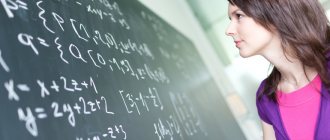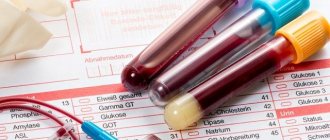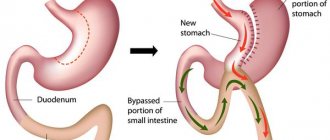Arnold Chiari malformation is a developmental disorder that consists of a disproportion between the size of the cranial fossa and the structural elements of the brain located in it. In this case, the cerebellar tonsils descend below the anatomical level and can be infringed.
Symptoms of Arnold Chiari malformation include frequent dizziness and sometimes result in a brain stroke. Signs of an anomaly may be absent for a long time, and then suddenly manifest themselves, for example, after a viral infection, a blow to the head or other provoking factors. Moreover, this can happen at any stage of life.
What is Arnold Chiari Anomaly (Syndrome)
Arnold Chiari syndrome (anomaly) is a congenital pathology of the development of the rhombencephalon. Abnormal brain development is a discrepancy between the size of the posterior cranial fossa and the brain structures in this area. Such a defect subsequently causes prolapse of the brain stem, as well as the cerebellar tonsils, into the foramen magnum of the occipital bone and leads to their infringement. In addition, the child has hydrocephalus and pathological development of the spinal cord. Since wedged brain structures, in particular the cerebellum, block the physiological circulation of cerebrospinal fluid, hydrocephalus of the brain develops.
Manifestations
Based on the frequency of occurrence, the following symptoms are distinguished:
- headaches – in a third of patients;
- pain in the limbs – 11%;
- weakness in the arms and legs (in one or two limbs) – more than half of the patients;
- feeling of numbness in the limb – half of the patients;
- decrease or loss of temperature and pain sensitivity – 40%;
- unsteadiness of gait – 40%;
- involuntary eye vibrations – a third of patients;
- double vision – 13%;
- swallowing disorders – 8%;
- vomiting – 5%;
- pronunciation disorders – 4%;
- dizziness, deafness, numbness in the facial area - in 3% of patients;
- syncope (fainting) – 2%.
Pain in the head and neck area is a common symptom of the pathology.
Chiari disease of the second degree (diagnosed in children) combines dislocation of the cerebellum, trunk and fourth ventricle. An integral symptom is the presence of a meningomyelocele in the lumbar region (herniation of the spinal canal with protrusion of the substance of the spinal cord). Neurological symptoms develop against the background of an abnormal structure of the occipital bone and cervical spine. In all cases, hydrocephalus is present, often a narrowing of the cerebral aqueduct. Neurological signs appear from birth.
Surgery for meningomyelocele is performed in the first days after birth. Subsequent surgical expansion of the posterior cranial fossa allows achieving good results. Many patients require bypass surgery, especially with stenosis of the aqueduct of Sylvius. With an anomaly of the third degree, a cranial hernia in the lower occiput or in the upper cervical region is combined with developmental disorders of the brain stem, cranial base and upper vertebrae of the neck. The formation involves the cerebellum and in 50% of cases the occipital lobe.
This pathology is very rare, has an unfavorable prognosis and sharply reduces life expectancy even after surgery. It is impossible to say exactly how long a person will live after timely intervention, but most likely not for long, as this pathology is considered incompatible with life. The fourth degree of the disease is an isolated hypoplasia of the cerebellum and today does not belong to the Arnold-Chiari symptom complex.
Clinical manifestations in the first type progress slowly over several years and are accompanied by the involvement of the upper cervical spinal cord and distal medulla oblongata with disruption of the cerebellum and caudal group of cranial nerves. Thus, in individuals with Arnold-Chiari malformation, three neurological syndromes are distinguished:
- Bulbar syndrome is accompanied by dysfunction of the trigeminal, facial, vestibulocochlear, hypoglossal and vagal nerves. In this case, disturbances in swallowing and speech, downward spontaneous nystagmus, dizziness, respiratory distress, paresis of the soft palate on one side, hoarseness, ataxia, incoordination of movements, and incomplete paralysis of the lower extremities are observed.
- Syringomyelitic syndrome is manifested by atrophy of the tongue muscles, difficulty swallowing, lack of sensitivity in the facial area, hoarseness of the voice, nystagmus, weakness in the arms and legs, spastic increase in muscle tone, etc.
- Pyramidal syndrome is characterized by slight spastic paresis of all extremities with hypotonicity of the arms and legs. Tendon reflexes in the limbs increase, abdominal reflexes are not evoked or are decreased.
The operation is performed for severe forms of the disorder
Pain in the back of the head and neck may intensify when coughing or sneezing. Temperature and pain sensitivity in the hands, as well as muscle strength, decreases. Fainting and dizziness often occur, and patients' vision deteriorates. In advanced cases, apnea (short-term cessation of breathing), rapid uncontrolled eye movements, and deterioration of the pharyngeal reflex appear.
An interesting clinical sign in such people is the provocation of symptoms (syncope, paresthesia, pain, etc.) by straining, laughing, coughing, and Valsalva maneuver (forced exhalation with the nose and mouth closed). With an increase in focal symptoms (stem, cerebellar, spinal) and hydrocephalus, the question arises of surgical expansion of the posterior cranial fossa (suboccipital decompression).
Types of Arnold-Chiari syndrome
According to the modern classification, there are four types of Arnold Chiari syndrome:
- Arnold Chiari malformation type 1 is characterized by displacement of the anatomical structures of the posterior cranial fossa into the spinal canal.
- Arnold Chiari malformation type 2 is characterized by displacement of the posterior parts of the cerebellar vermis, fourth ventricle and medulla oblongata.
- The third type is characterized by either a strong displacement of all structures of the posterior cranial fossa into the spinal canal.
- The fourth type of disease is determined by underdevelopment of the cerebellum without its dislocation into the spinal canal.
The last two types of disease are incompatible with life.
Very often, patients with Arnold Chiari syndrome have concomitant spinal pathology, which occurs when there is strong pressure from the anatomical structures of the posterior cranial fossa on the cervical spine. Such a pathology is spinal cysts. They can be large and often cause symptoms of spina bifida (severe pain, dysfunction of internal organs).
Diagnostics
The diagnosis of type 1 anomaly is not accompanied by spinal cord damage and is made mainly in adults using CT and MRI. According to the pathoanatomical autopsy, in children with spinal canal hernia, Chiari disease of the second type is detected in most cases (96–100%). Using ultrasound, you can determine disturbances in the circulation of cerebrospinal fluid. Normally, cerebrospinal fluid circulates easily in the subarachnoid space.
Downward displacement of the tonsils impedes circulation. Due to impaired fluid dynamics, hydrocephalus occurs.
Lateral X-ray and MR picture of the skull shows the expansion of the spinal canal at the level of C1 and C2. On angiography of the carotid arteries, the cerebellar artery bends around the tonsil. X-rays show concomitant changes in the craniovertebral region, such as underdevelopment of the atlas, odontoid process of the epistrophe, and shortening of the atlanto-occipital distance.
With syringomyelia, a lateral X-ray image shows underdevelopment of the posterior arch of the atlas, underdevelopment of the second cervical vertebra, deformation of the foramen magnum, hypoplasia of the lateral parts of the atlas, enlargement of the spinal canal at the C1-C2 level. Additionally, MRI and invasive x-ray examination should be performed.
MRI is the most preferred diagnostic method
The manifestation of symptoms of the disease in adults and the elderly often becomes the reason for identifying tumors of the posterior cranial fossa or craniospinal region. In some cases, the patient’s external manifestations help to make a correct diagnosis: low hairline, shortened neck, etc., as well as the presence of craniospinal signs of bone changes on X-rays, CT and MRI.
Today, the “gold standard” for diagnosing the disorder is MRI of the brain and cervicothoracic region. It is possible to perform intrauterine ultrasound diagnostics. Possible ECHO signs of abnormality include internal dropsy, a lemon-shaped head, and a banana-shaped cerebellum. At the same time, some experts do not consider such manifestations to be specific.
To clarify the diagnosis, different scanning planes are used, thanks to which several informative symptoms in the fetus can be detected regarding the disease. Obtaining an image during pregnancy is quite easy. In view of this, ultrasound remains one of the main scanning options to exclude pathology in the fetus in the second and third trimesters.
Identification of signs of the disease in the fetus can be an indication to exclude malformations of the spinal column, however, even the absolute absence of ultrasound data indicates spina bifida in 95% of cases.
Reasons for the development of Arnold Chiari malformation
The exact pathogenesis of the malformation is not fully known. But there are several key pathogenetic development factors: genetically determined congenital osteoneuropathy, damage to the skull bones as a result of birth trauma, hydrodynamic shock in the spinal canal.
Today, doctors identify several reasons that can lead to the development of this defect:
- unfavorable factors that affect a pregnant woman;
- taking medications during pregnancy;
- smoking and alcoholism during pregnancy;
- viral infectious diseases of a pregnant woman.
In children
The block most commonly noted is within the ventricular system and is noncommunicating hydrocephalus . This is usually caused by a narrowing of the Sylvian aqueduct or underdevelopment of the foramina of Magendie and Luschka. As a generalized disorder of the development of the nervous system, it can be combined with micro- or macrogyria, porencephaly, agenesis of the corpus callosum, fusion of the cerebral hemispheres, agenesis of the cerebellar vermis, vertebral clefts, meningocele, encephalocele, syringomyelia, hydromyelia . The cause of communicating hydrocephalus may be the formation of adhesions in the subarachnoid region at the base of the brain, perinatal subarachnoid or intraventricular hemorrhages.
The syndrome in children can occur as a result of traumatic injuries to the sphenoid-occipital and sphenoid-ethmoid region due to birth injuries. Clinical manifestations include feeding disorders ( reflux and aspiration ), episodes of apnea , stridor , cranial innervation disorders, and seizures resistant to anticonvulsants.
Arnold Chiari syndrome in the fetus
Chiari pathology is a congenital osteoneuropathy and is formed at the stage of formation and development of the neural tube in the fetus, asynchronous formation of the nerve trunk and bones of the cranial fossa.
The morphological manifestations of this pathology can be identified during an ultrasound examination and determine the further prognosis. Most often, the detection of pathology becomes the reason for termination of pregnancy.
Symptoms and clinical picture
Many people suffering from this developmental pathology may not even be aware of its presence. Usually, they are diagnosed accidentally and do not require any treatment.
The remaining patients have more or less severe symptoms of the disease. The disease is accompanied by pain in the cervical-occipital region of the head, which tends to intensify with coughing, hiccups, and also with sneezing. A neurologist finds a decrease or complete absence of pain and temperature sensitivity of the upper extremities, muscle weakness and spasticity of the extremities. Also, fainting and dizziness are observed, there may be decreased vision, episodic apnea, and involuntary rapid eye movement. An increase in intracranial pressure is characterized by morning pain in the head, a feeling of hissing and ringing in the ears. Deterioration in coordination is manifested by tremor of the upper or lower extremities. As the disease progresses, the patient develops problems with urination, weakness and general fatigue increase. During movement, the clinical picture becomes more vivid.
associated risks
Chiari can create a number of dangers for people suffering. Because it pushes the cerebellum of the amygdala down, the base of the brain is subjected to higher than normal pressure, which can cause certain neurological problems. Additionally, in some cases the condition causes the passage of the cerebrospinal fluid to be blocked. This is a serious problem because this protective fluid contains all the nutrients needed to nourish the brain and also removes waste.
Possible complications
Uncontrolled progression of the disease is fraught with significant complications. They do not occur in all patients, but sometimes they still occur. These include:
- Hydrocephalus, which requires a shunt and drainage of excessive cerebrospinal fluid.
- Paralysis can occur due to compression of certain structures of the spinal cord.
- Syringomyelia is a spinal disease characterized by the appearance of cystic formations in the spinal cord. Cysts filled with fluid can disrupt the functions of the spinal cord.
- Bone defects of the cervical vertebrae.
Symptoms of the disease
If we talk about the clinical manifestations of the disease, then most often we have to remember the pathology of the 1st degree. Its first manifestations can make themselves felt only during puberty; changes are often noticed by older people. As is the case with other brain pathologies, the first signal and cause for concern may be a headache, especially if it does not disappear even after exposure to painkillers. By the way, the symptoms may vary depending on the physical condition of the person, his gender and age, but quite often these are a shaky gait, problems with fine motor skills of the hands (the inability to perform basic housework), numbness of the limbs, pain in the neck area.
Diagnosing Arnold-Chiari malformation is a very difficult task, but it can be solved, and modern diagnostic methods come to the rescue, including computed tomography and magnetic resonance imaging, and MRI is especially effective in this case. A routine neurological examination will only determine the presence of hydrocephalus (high intracranial pressure). In this case, X-rays are also powerless, recording only a violation of the condition of the skull. Quite often the disease does not manifest itself, so the diagnosis is not always made in a timely manner, just as the treatment of Arnold-Chiari malformation is not started in a timely manner. In Moscow, many institutions are engaged in this, but the best results are demonstrated by specialists from the oldest neurosurgical institution - the Scientific and Practical Center named after. Burdenko.
Diagnostic tactics
If the patient has certain complaints or a developmental anomaly was discovered by chance, he should contact a qualified neurologist for further diagnosis and treatment. The neurologist will take a medical history, conduct a full examination of the patient, and assess his neurological status. To make a final diagnosis, Israeli specialists use the following diagnostic methods:
- X-ray examination of the skull reveals only bone abnormalities.
- MRI of the brain and spinal cord, as well as CT using contrast, demonstrates the presence of abnormalities in the development of bone tissue and reveals a violation of the location of the soft tissues of the brain.
- Echo-EG, EEG and REG provide information about the state of intracranial pressure.
Consequences and prognosis for life
Once the diagnosis is confirmed, treatment should begin as soon as possible. Certain diagnostic problems may arise due to the asymptomatic course of the disease. Chiari malformation grade 3 is often fatal. But timely surgical treatment allows you to avoid adverse consequences. The operation is the gold standard of modern neurosurgery.
Even minor neurological manifestations are an indication for contacting specialists. Ideally, treatment should begin immediately after the pathology is identified. The disease in its advanced form ends in disability and death of the patient.
Timely treatment using surgery allows you to avoid irreversible atrophic processes in the central nervous system. At the Burdenko Research Institute, such surgical interventions are performed at a high professional level. Experienced neurosurgeons work with patients, paying special attention to each stage of treatment, including preparation for surgery and conducting a thorough comprehensive examination.
After surgery, patients are under the supervision of neurosurgeons, rehabilitation specialists, and resuscitators. Specialists monitor vital signs of the body. If necessary, professionals provide first aid and slow down the development of complications and other adverse health consequences. Modern techniques used in neurosurgery make it possible to reduce the degree of tissue damage during work with the brain and avoid unnecessary injuries and blood loss.
Arnold Chiari malformation - treatment in Israel
Treatment for each patient depends on a number of factors. These include the type of abnormal development, duration of the disease, severity level, as well as the results of all diagnostic procedures of the patient and his individual characteristics. Based on these data, the neurologist prepares an individual treatment.
If the basis of the clinical picture is a minor headache, then conservative treatment with anti-inflammatory drugs and muscle relaxants can be completely done. And if the disease progresses and conservative therapy is ineffective or ineffective, then you need to turn to operative surgical treatment.
During the operation, the neurosurgeon eliminates compression of the nerve fibers and restores normal circulation of the cerebrospinal fluid. To do this, he needs to enlarge the posterior cranial fossa. If the operation is successful, the patient feels much better, breathing, motor functions and sensitivity return to normal. Specialists at Israeli clinics take a comprehensive approach to the treatment of Arnold-Chiari syndrome; each patient receives an individual, most appropriate treatment regimen.
Treatment
In asymptomatic cases, constant monitoring with regular ultrasound and radiographic examination is indicated. If the only sign of an abnormality is minor pain, the patient is prescribed conservative treatment. It includes a variety of options using non-steroidal anti-inflammatory drugs and muscle relaxants. The most common NSAIDs include Ibuprofen and Diclofenac.
You cannot prescribe painkillers yourself, as they have a number of contraindications (for example, peptic ulcer). If there is any contraindication, the doctor will select an alternative treatment option. Dehydration therapy is prescribed from time to time. If there is no effect from such treatment within two to three months, surgery is performed (expansion of the foramen magnum, removal of the vertebral arch, etc.). In this case, a strictly individual approach is required to avoid both unnecessary intervention and delays in surgery.
Treatment tactics for each patient require an individual approach
In some patients, surgical exploration is the way to make a definitive diagnosis. The purpose of the intervention is to eliminate compression of the nerve structures and normalize cerebrospinal fluid dynamics. This treatment results in significant improvement in two to three patients. The expansion of the cranial fossa helps to eliminate headaches and restore tactility and mobility.
A favorable prognostic sign is the location of the cerebellum above the C1 vertebra and the presence of only cerebellar symptoms. Relapses may occur within three years after the intervention. Such patients are assigned a disability by decision of the medical and social commission.
Preventive measures
Prevention of the occurrence of the syndrome lies in the careful attitude of the pregnant woman to her health and the health of the baby. She is advised to eat healthy foods and stop smoking and drinking alcohol. The recommendations of the attending physician must be followed in full, this also applies to taking medications. All this will help reduce the likelihood of developmental defects in the baby to a minimum.
Arnold Chiari syndrome is a very rare birth defect. But with timely diagnosis and treatment of this disease, you can almost completely get rid of neurological manifestations and become a healthy person. Therefore, it is so necessary to promptly contact highly specialized clinics, such as Israeli clinics.
General information
Arnold-Chiari syndrome is a malformation of the cerebellum, a part of the brain responsible for coordination, muscle tone and balance.
The pathology is assigned the ICD-10 code Q07.0 and it represents a descent of the cerebellar tonsils down to the level of the first, and sometimes the second cervical vertebra (below the Chamberlain line) and blocks the normal flow of cerebrospinal fluid. The disease is most often combined with microgyria , compression of the posterior part of the brain, stenosis of the cerebral aqueduct, basilar impression, invagination, underdevelopment of the quadrigeminal and other malformations of the nervous system. The syndrome most often occurs in individuals aged 12-71 years and does not exceed 000.9%.
Localization and structure of the cerebellum










